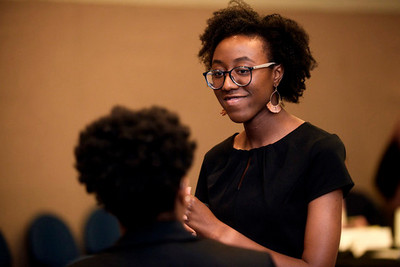
In 2007, Tennessee scored a D in overall Academic Achievement and an F in the Academic Achievement of Low-Income and Minority Students in the Leaders and Laggards State Report Card. I was in fifth grade at a high-achieving, suburban public elementary school and didn’t realize that the state was failing my peers in the area of academic achievement. In response to the dismal scores, Governor Phil Bredesen and his team sought after and secured the U.S. Department of Education’s Race to the Top Grant.
In 2013, Governor Bill Haslam built on Governor Bredesen’s work and furthered conversations on academic achievement by launching the Drive to 55, a campaign to increase the percentage of Tennesseans with a postsecondary credential to 55 by 2025. By this time, I was a junior at a high-achieving, suburban public high school. Many students in my graduating class, myself included, were already considering college, taking multiple Advanced Placement (AP) courses, and discussing the future.
As an African American student in predominantly white K-12 schools, I learned about school integration without seeing diversity in my classroom; there were a handful of students of color, and even fewer African American students. It was around this time, in 2013, that I tuned in to education conversations and questioned who was succeeding in school and who was not. Through my experiences and conversations with my grandparents, who were civil rights activists and educators in Memphis throughout white flight, I saw how race and income intersected to create the inequitable public education system where I learned and they worked.
In 2014, Governor Haslam announced that the first class of the Tennessee Promise program would be my high school graduating class. In 2015, I graduated from high school with plans to pursue college alongside peers attending four-year universities and community colleges and TCATs through the Tennessee Promise scholarship. Today, it has been four years since I graduated from high school. In those four years, “African American six-year graduation rates have declined each year” (they’ve been on the decline since 2013). And, according to Complete Tennessee’s 2018-9 State of Higher Education report, “Black and Latino postsecondary attainment trails that of Tennesseans who identify as White and Asian American. Further, compared to their same-race peers, Tennesseans across racial and ethnic subpopulations have lower postsecondary attainment rates than national averages.” Clearly, there is still critical work to be done in equity and completion.
As a SCORE intern, I’ve seen the collaboration, empowerment, and continual learning needed to further critical work — most notably through the Tennessee Educator Fellowship (TEF). In July, the 2019-20 TEF cohort met for the first time. Throughout the fellowship, SCORE facilitates collaboration between educators, lawmakers, government leaders, and advocates. It empowers and uplifts the voices of educators. It emphasizes continual learning and research among the fellows and within SCORE.
I remain optimistic about the future of education because of initiatives like TEF and partners who seek to empower students, teachers, and communities. They help me believe that we will “transform education — from kindergarten through postsecondary — so Tennessee students develop the knowledge and skills to succeed in school, college, career, and life.”
Jasmine Blue just completed a summer internship with SCORE.
